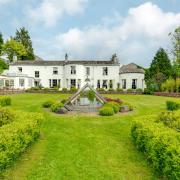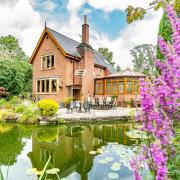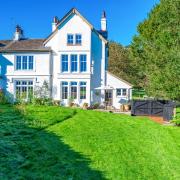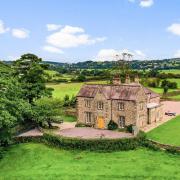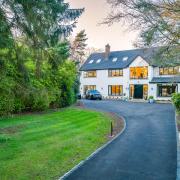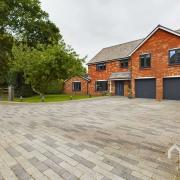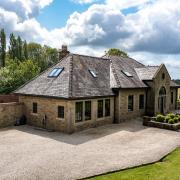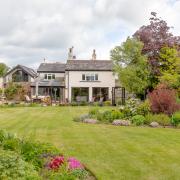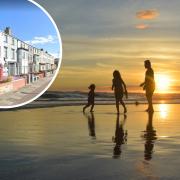A remarkable housing development on the banks of the Lune is a million miles away from the hippy communes of the 60s. Sue Riley reports Photography Darren Andrews
How would you like to cook a meal for more than 50 strangers on a monthly basis and, when their friends come to stay, let them spend the night in your spare room?
Throw in ridiculously cheap fuel bills and more time to do exactly what you want and it’s that sort of dream which has led to the multi-million Lancaster Cohousing project nearing completion on the outskirts of Halton in the beautiful Lune Valley.
The project is essentially a pedestrianised road along the bank of the River Lune with houses and flats built on one side and communal facilities on the other.
It was originally the idea of a group of five Lancaster friends but most of the residents don’t know each other yet. What they do know is that they will be required to cook a monthly meal, join various teams to ensure the smooth running of the project and take part in consensual decision making.
This isn’t the 1960s and we’re not talking about a hippy commune. Each individual or family – there’s a couple in their 20s, families with young children, some single people and many in early retirement - have bought their own home which comes with all mod cons, including triple glazing meaning heating bills are likely to be less than �50 a year.
‘By pooling resources we have lower monthly outgoings. It’s all designed for spontaneous interaction with your neighbours,’ said Mark Westcombe, 42, who teaches at Lancaster University. ‘You can have a small house and when people come to stay you can put them in a shared guest room.
‘It’s about being connected with other people, knowing there’s a long term future together. I am forming a relationship with people who will be here in 20 to 30 years.’
He is particularly pleased that the generations mix. ‘The idea is you can grow old here. I call this my pension plan! I think previous generations may have been stuck in communities they wanted to escape. Everyone is happy to be here.’
The quality of the housing is part of the attraction for some of the residents; others like the community aspect, the food co-operative where they buy in bulk, the car club and that by the summer the former industrial mill on the site will be developed into a workspace where anyone can rent a workshop, office or desk.
The five friends bought the Halton site in August 2009 - five acres of prime land on the edge of the village. Now all but one of the 41 houses and flats which will be completed by Easter have sold – about half to locals with others moving from as far as Scotland and London. One bedroom flats have sold for �134,000 while those with three to four were �300,000. Each house pays a service charge which covers use of the communal facilities including the common house with its comfortable lounge area and kitchen with recycled worktops, industrial dishwasher, cooker and huge fridge; children’s room, laundry, guest rooms and outside space.
Every household is on a monthly rota and must shop and cook a meal in the common house for as many residents who want to eat.But Mark insists there are few rules. Jan Maskell, an occupational psychologist, said: ‘Instead of simply voting for an item, and letting the majority get their way, the group is committed to finding solutions everyone can live with. It can take a bit longer but it is worth it.’
Cohousing is particularly popular in Scandinavia but Halton is only the second in the UK. Kathy Bashford, a mother-of-two, was one of the original group of five including Mark, Jon Sear and Chris Coates (past and present Green Party councillors) who are all living here. ‘When you are doing the washing up you see your friends walking by, that’s quite nice,’ said Kathy, aged 40. She thinks she and her children Polly, three, and Isla, six months, will probably eat in the common house about three times a week. Daughter Polly has also already become best friends with the little girl next door.
‘Some people who are here are looking for community, some people are looking for an eco house, but whatever way they come it they tend to embrace the other side of it,’ said Kathy.
The low heating bills and extreme insulation – they use a German eco standard called passivhaus - has attracted some residents. The houses designed by Staveley architects Ecoarc don’t have gas and all their heating and hot water is through a boiler which is in the old mill building. In Mark’s three-bedroom house he has just one radiator.
‘Often, villages might resist cohousing and within one or two years they are clamouring to get them on the parish council because cohousing people tend to get things done,’ said Mark, who said they had had no resistance in Halton.
Halton city councillor Paul Woodruff agreed, saying most people he had met hoped the new community would become part of the village too. He wished them well but added that communal living certainly wasn’t for him: ‘The last communal thing I did was Butlins and that was quite enough.’
For more details go to www.lancastercohousing.org.uk
Words Sue RileyPhotography Darren Andrews





